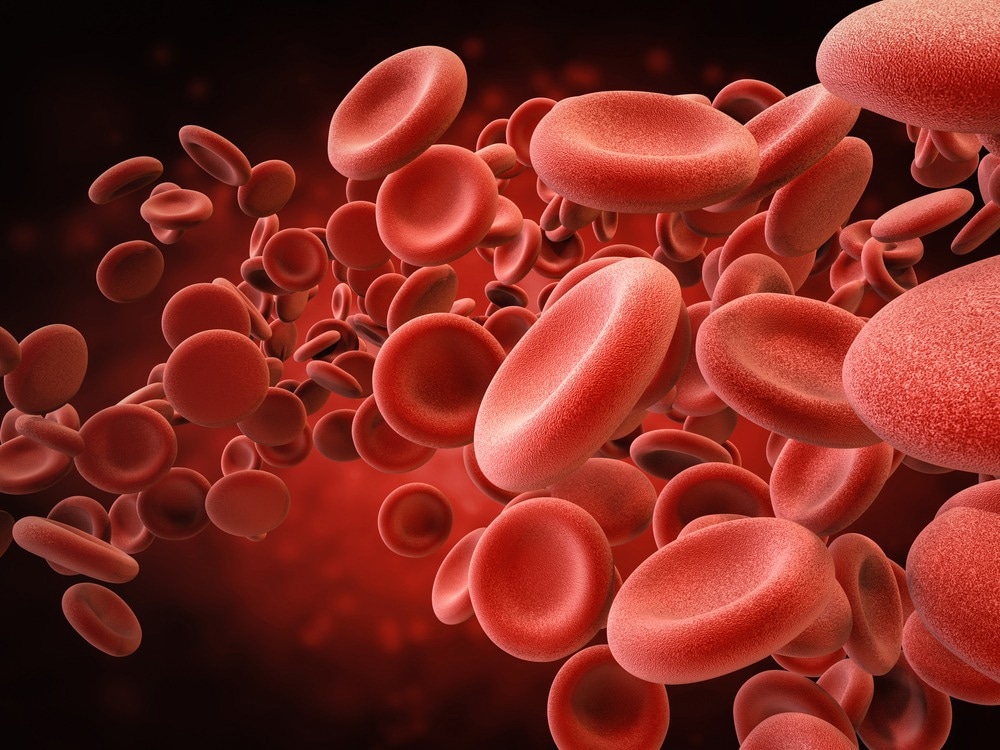In a recent study posted to the medRxiv* preprint server, researchers assessed the infectious capacity of severe acute respiratory syndrome coronavirus 2 (SARS-CoV-2) in plasma and red blood cells (RBCs), ascertaining its role in SARS-CoV-2 dissemination.

Study: Coronavirus pathogenesis in mice explains the SARS-CoV-2 multi-organ spread by red blood cells hitch-hiking. Image Credit: honlamaiPhoto/Shutterstock.com

 *Important notice: medRxiv publishes preliminary scientific reports that are not peer-reviewed and, therefore, should not be regarded as conclusive, guide clinical practice/health-related behavior, or treated as established information.
*Important notice: medRxiv publishes preliminary scientific reports that are not peer-reviewed and, therefore, should not be regarded as conclusive, guide clinical practice/health-related behavior, or treated as established information.
Background
Coronavirus disease 2019 (COVID-19) is a multisystemic illness affecting respiratory and non-respiratory organs. Studies have reported that SARS-CoV-2 infections are related to several hematological diseases; however, data on how SARS-CoV-2 can navigate to different tissues are limited.
About the study
In the present study, researchers investigated the association between viral organotropism and clinical manifestations employing the prototypical CoV in the naturally occurring host, the murine hepatitis virus (MHV)-A59 model.
Quantitative reverse-transcription-polymerase chain reaction (RT-qPCR) and viral infectivity analysis were performed. The plasma and RBC-enriched fractions were compared.
Further, in silico computational docking analysis was performed to investigate the potential interaction between heme (and heme-associated molecules) and murine hepatitis virus spike protein.
Sera and nasopharyngeal swabs of 37 RT-qPCR-confirmed COVID-19 patients were obtained. SARS-CoV-2 ribonucleic acid (RNA) was extracted to qualitatively and quantitatively detect SARS-CoV-2.
Kidney, heart, lung, and liver tissues were obtained from autopsies performed on eight individuals with COVID-19-associated deaths. BALB/cJ mice were used for the in vivo experiments, infected with MHV by intraperitoneal injection, and treated with hemin and chloroquine, individually and in combination.
Murine lung, liver, heart, kidney, spleen, pancreas, and brain tissues were obtained for RT-qPCR and infectious SARS-CoV-2 particle evaluation. Blood samples were obtained for biochemistry-related and hematological assessments before and after infection.
Plaque assays were performed to assess viable SARS-CoV-2 particles. The team compared the results with real-world information on SARS-CoV-2-positive individuals, including autopsies of individuals deceased due to COVID-19.
Results
The mean age of the participants was 56 years, and 68% (n=19) were men. SARS-COV-2 ribonucleic acid was detected in the sera of 23% of the patients, whereas all individuals had multiple SARS-CoV-2-positive nasopharyngeal swabs.
Of note, SARS-CoV-2 ribonucleic acid was detected in the kidneys and heart of individuals, in addition to in the lungs of individuals deceased due to COVID-19.
SARS-CoV-2 infectivity and RT-qPCR findings showed SARS-CoV-2 ribonucleic acid and infectious SARS-CoV-2 particles' presence in several organs and tissues, including the lung, liver, heart, brain, spleen, kidney, blood, and pancreas.
Greater viral loads, monocyte proportions, neutrophil proportions, platelet-to-lymphocyte ratio (PLR), and neutrophil-to-lymphocyte ratio (NLR) were observed post-infection, with lowered erythrocyte count, hemoglobin levels, hematocrit, leukocyte counts, lymphocyte proportion, and platelet counts among infected mice.
Of note, combining chloroquine and hemin treatment attenuated the clinical presentation of the infection. Computational docking showed that heme could bind with the murine hepatitis virus spike protein similarly to SARS-CoV-2. SARS-CoV-2 RNA was detected at high viral loads in all pulmonary samples, but in only 14% of cardiac samples, and to some extent, in the kidneys, at low viral loads.
MHV infection significantly reduced the weight of infected mice, and SARS-CoV-2 RNA was most abundant in mice's lungs, liver, spleen, and brain. SARS-CoV-2 particles, obtained from various organs, were infectious, as determined by the viral infectivity assays.
Hepatic parameters, including total protein, globulin, and albumin, were lowered, whereas aspartate aminotransferase (AST) and alanine transaminase (ALT) levels rose post-infection. Concerning the kidneys, the blood urea nitrogen (BUN) level increased significantly following infection.
Among the murine animals infected with MHV, the weight of the heart was lower, whereas that of the spleen was greater than in the control mice. MHV was primarily detected in the RBC fraction and negatively affected the blood biochemistry.
Viral loads and viral titers were greater in the erythrocyte-enriched fraction than in the plasma-enriched blood fraction. Hemin enhanced CoV RNA abundance systemically and increased SARS-CoV-2 particles in erythrocytes.
Combined hemin and chloroquine treatment reversed the enhanced infection phenotype observed with hemin treatment alone. Of interest, RT-qPCR findings indicated that hemin-treated and murine animals infected with MHV had significantly greater SARS-CoV-2 RNA abundance in the lung, liver, kidneys, and heart, with slightly greater abundance in the brain than the uninfected and untreated mice.
The combined treatment reversed coV-induced effects on hematological parameters. The findings indicated SARS-CoV-2 presence in the blood compartment, in RBC and plasma, elevation in viral particles from both fractions under hemin treatment, and the counteracting effect when both drugs, hemin, and chloroquine, were administered.
Conclusion
Overall, the study findings showed multiple organ involvement combined with mechanisms of RBC and hematological dysregulation that may favor SARS-CoV-2 infection and shed light on the probable implications of infectious SARS-CoV-2 particles presence in erythrocytes of SARS-CoV-2-positive individuals.
The study findings indicated possible ways SARS-CoV-2 may induce hemolysis, sequestering heme and hitch-hicking its way into multiple organs, supporting the involvement of multiple organs in COVID-19 via interaction with erythrocyte hemoproteins.

 *Important notice: medRxiv publishes preliminary scientific reports that are not peer-reviewed and, therefore, should not be regarded as conclusive, guide clinical practice/health-related behavior, or treated as established information.
*Important notice: medRxiv publishes preliminary scientific reports that are not peer-reviewed and, therefore, should not be regarded as conclusive, guide clinical practice/health-related behavior, or treated as established information.